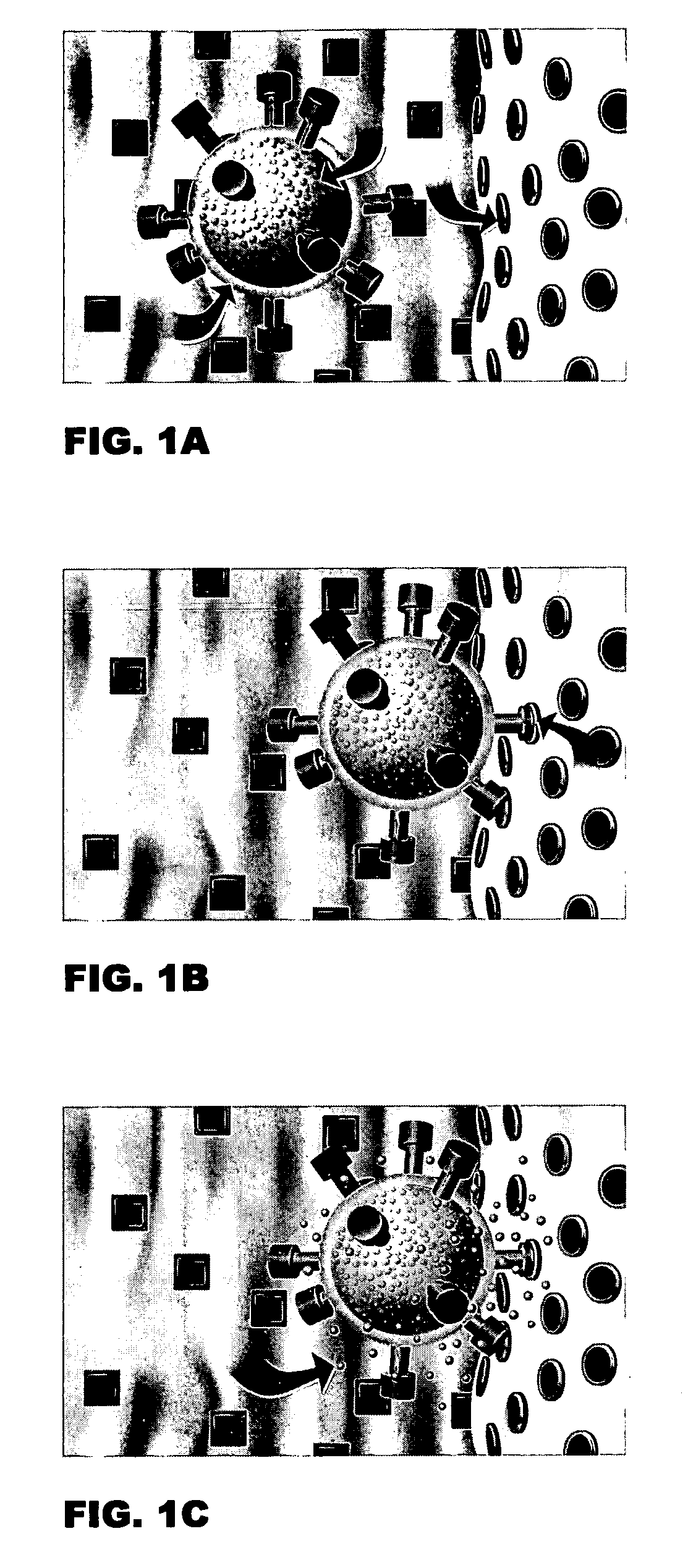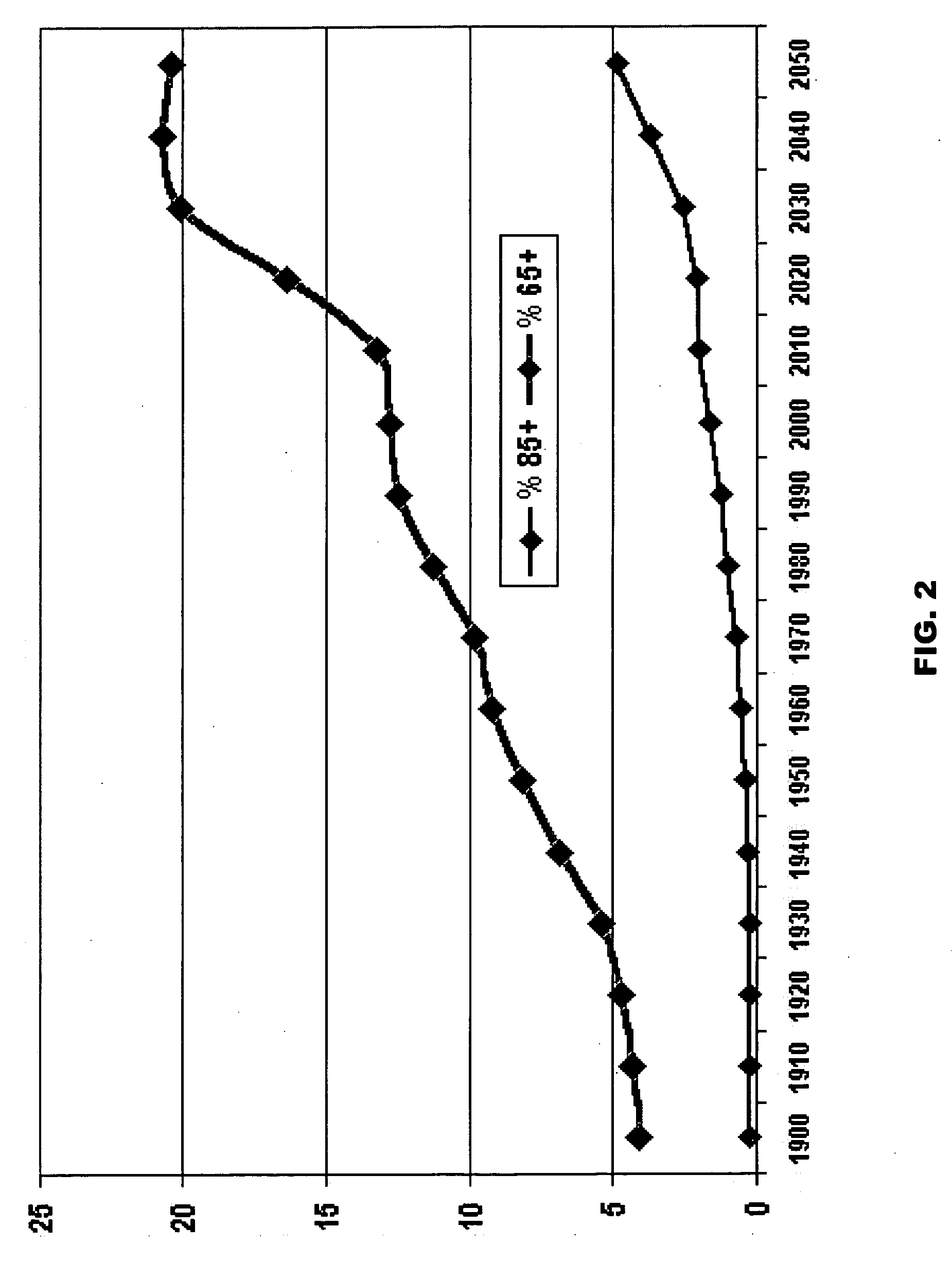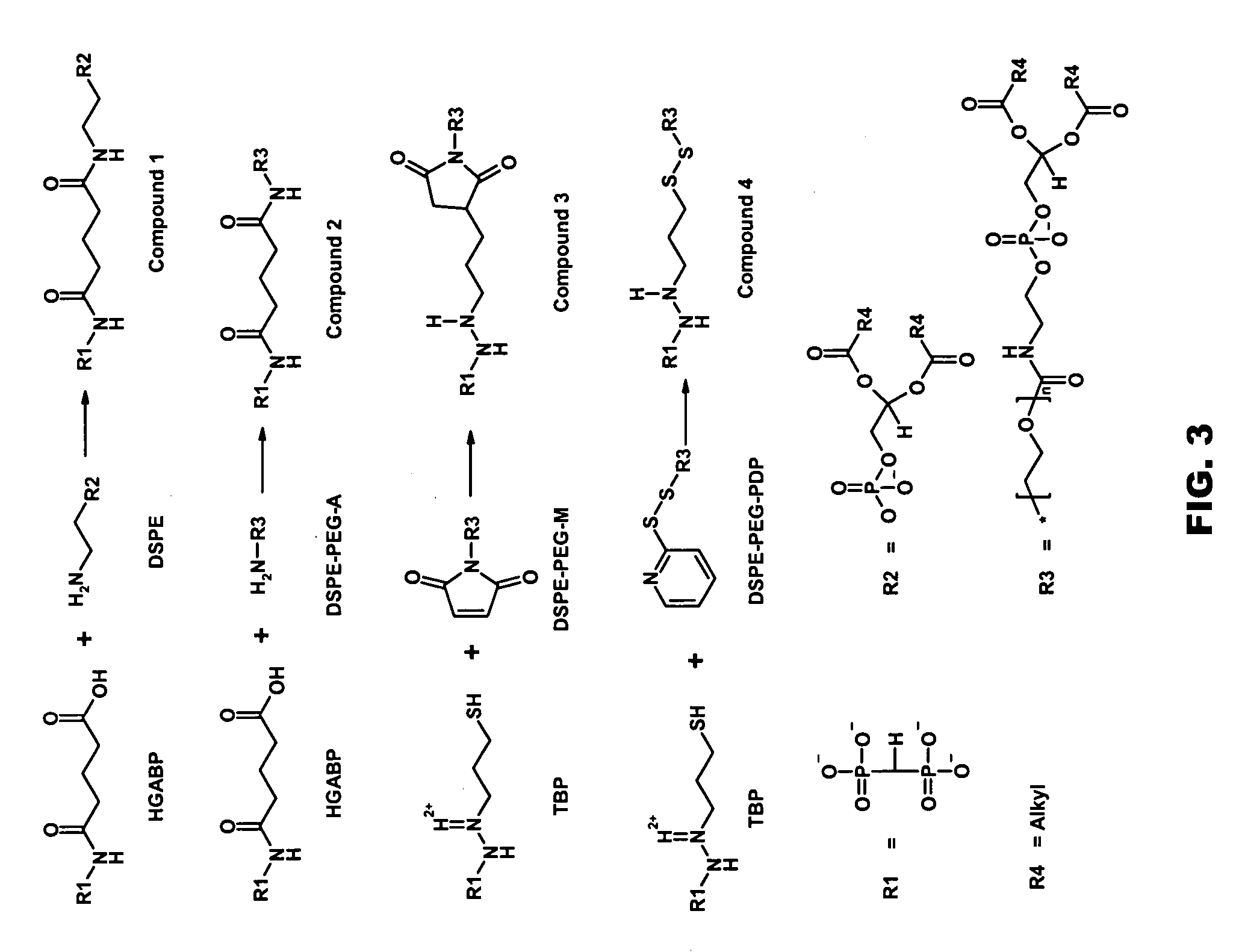Skeletally targeted nanoparticles
- Summary
- Abstract
- Description
- Claims
- Application Information
AI Technical Summary
Benefits of technology
Problems solved by technology
Method used
Image
Examples
example 1
Targeting Ligand Synthesis and Conjugation to Phospholipids
[0123] The amino-functionalized analogue of MBP was synthesized by known methods (Uludag et al., Biotechnol. Prog., 16, 258-267 (2000)) and purified by chromatography. A six mer oligomer of aspartic acid (ASP6) was custom synthesized (New England Peptide, Inc.). The N-terminus of both ligands was converted to thiol with 2-iminothiolane (2-IT) and the products subsequently conjugated to maleimide functionalized distearoyl phosphotidylethanolamine-N-methoxypolyethylene glycol-2000 (DSPE-PEG2000-M, Northern Lipids). The conjugate structures were analyzed by MALDI-TOF / MS (FIG. 6). The MALDI spectrum for neat DSPE-PEG2000-M, indicated it has a median mass of about 3010. Conjugation of this functionalized lipid to the thiolated MBP ligand (FW=280.2) shifted the median mass accordingly, yielding conjugate with a median mass of about 3305. Conjugation of the Asp6 ligand to the same lipid was confirmed similarly.
example 2
In Vitro Targeting of Ligand-Phospholipid Conjugates
[0124] The two ligands a-MBP and Asp4, were separately conjugated to fluorescein isothiocyanate (FITC) through their N-terminus. The ligands were each dissolved in HEPES buffer and FITC added in 2× molar excess. The reaction proceeded for 24 hours, after which, the product was dialyzed to remove unreacted components. Table 1 lists the properties of four different hydroxyapatite powders used to study the extent of labeled ligand adsorption. Scanning electron micrographs were prepared of each of the powders. The powders were washed with phosphate buffer solution and dried before use. The fluorescein-labeled ligands were mixed with varying quantities of the HAp powders to produce dispersions containing from 0 to 100 nmol of ligand / mg of HAp substrate. The dispersions were incubated at room temperature for 24 hours, centrifuged, the particulate-free liquid collected, and analyzed FITC content by UV-Vis at 510 nm. Unconjugated FITC in ...
example 3
Preparation of Bone-Targeting Liposomes
[0126] Liposomes were prepared from distearoyl-phosphatidylcholine, cholesterol, α-tocopherol, and DSPE-PEG2000 in the molar ratios 1:1:0.04:0.05, respectively, by hydration of lyophilized lipid films followed by sizing through nanoporous filters and purification (www.avantilipids.com; Mayer et al., 1986). Particle size and distribution were analyzed (N4 Plus, Beckman-Coulter) to confirm target particle size of the final liposomes.
[0127] Ligand-phospholipid conjugates were inserted into preformed liposomes using the method of post-insertion (Uster et al., 1996). Briefly, micelles of ligand-phospholipid conjugates were prepared by sonicating a quantity of material in HEPES buffer to obtain a dispersion. The micelles were incubated with preformed liposomes at 60° C. for approximately one-hour, after which the liposomes were separated by size exclusion chromatography. The ligand content of the modified liposomes was determined by complexing the ...
PUM
| Property | Measurement | Unit |
|---|---|---|
| Length | aaaaa | aaaaa |
| Length | aaaaa | aaaaa |
| Diameter | aaaaa | aaaaa |
Abstract
Description
Claims
Application Information
 Login to View More
Login to View More - R&D
- Intellectual Property
- Life Sciences
- Materials
- Tech Scout
- Unparalleled Data Quality
- Higher Quality Content
- 60% Fewer Hallucinations
Browse by: Latest US Patents, China's latest patents, Technical Efficacy Thesaurus, Application Domain, Technology Topic, Popular Technical Reports.
© 2025 PatSnap. All rights reserved.Legal|Privacy policy|Modern Slavery Act Transparency Statement|Sitemap|About US| Contact US: help@patsnap.com



